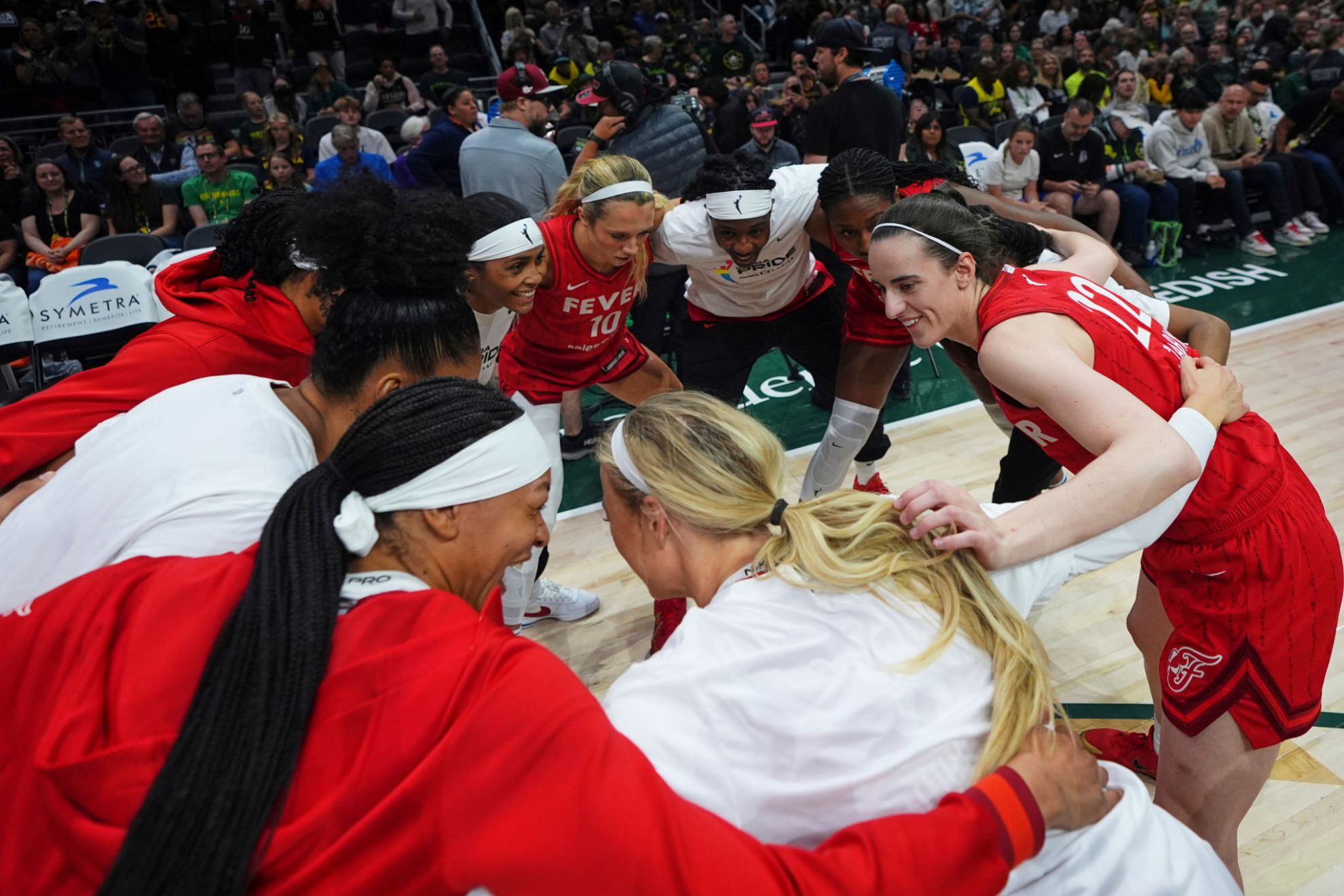Lexie Hull Breaks Down Caitlin Clark’s Struggles With Indiana Fever and Key Adjustments She Needs to Make
Caitlin Clark, the electrifying rookie who took college basketball by storm, has faced unexpected challenges in her transition to the WNBA with the Indiana Fever. While her talent is undeniable, her early performances have been inconsistent, drawing both criticism and concern from fans and analysts. Fellow Fever guard Lexie Hull, who has witnessed Clark’s adjustment firsthand, recently shared insights into the rookie’s struggles and what she needs to improve to thrive at the professional level.
Clark’s dominance in college was unparalleled. At Iowa, she was the focal point of the offense, with the freedom to take deep threes, orchestrate plays, and control the tempo. However, the WNBA presents a different beast—faster, more physical, and filled with elite defenders who are quicker, stronger, and more experienced. Hull, who went through her own rookie adjustments in 2022, emphasized that the speed of the game is the first major hurdle.
“In college, Caitlin could size up defenders, take a step-back, and hit a three with relative ease,” Hull explained. “But in the WNBA, closeouts are faster, rotations are sharper, and defenders don’t give you that extra second. She’s learning that she has to make decisions quicker—whether it’s shooting, driving, or passing.”
One of the biggest adjustments for Clark has been dealing with the physicality of WNBA defenders. Unlike college, where she often overpowered opponents with her scoring ability, professional defenders are more aggressive in bumping her off her spots, denying her clean looks, and forcing her into tough shots. Hull pointed out that Clark’s ability to navigate screens and fight through contact will be crucial.
“Defenders are being physical with her off-ball, making it harder for her to catch and shoot in rhythm,” Hull said. “She’s also seeing more double teams and traps, which is something she didn’t face as consistently in college. She has to improve her footwork and strength to create separation.”
Clark’s three-point shooting, one of her biggest strengths, has been inconsistent in the WNBA. While she’s had flashes of brilliance, her percentages are down, partly due to contested shots and rushed attempts. Hull believes Clark needs to refine her shot selection, taking fewer deep, off-the-dribble threes and instead focusing on catch-and-shoot opportunities within the flow of the offense.
“She’s still adjusting to the WNBA three-point line, which is deeper,” Hull noted. “In college, she could pull up from anywhere, but here, those shots are lower percentage unless they’re wide open. She’s learning when to pick her spots and when to move the ball.”
Another area where Clark has struggled is turnovers. As a primary ball-handler, she’s faced intense defensive pressure, leading to rushed passes and unforced errors. Hull stressed that Clark must improve her decision-making under duress, particularly against aggressive defensive schemes.
“Teams are blitzing her on pick-and-rolls, forcing her to make quick reads,” Hull said. “Sometimes she tries to force passes that aren’t there. The more film she watches, the better she’ll get at recognizing defenses and making the simple play.”
While Clark’s offensive game has drawn the most attention, her defense has also been a point of concern. In college, she could sometimes rely on her offensive output to offset defensive lapses, but in the WNBA, guards exploit mismatches relentlessly. Hull emphasized that Clark must improve her lateral quickness and off-ball awareness to avoid being targeted.
“Defense in the WNBA is about positioning and effort,” Hull said. “Caitlin has the length to be disruptive, but she has to stay engaged on every possession. The best players in this league will attack any hesitation.”
Perhaps the biggest challenge for Clark is the mental aspect of adjusting to the league. The expectations placed on her are immense, and every missed shot or turnover is magnified. Hull, who has seen the highs and lows of being a young player in the WNBA, stressed the importance of patience and self-belief.
“It’s a long season, and rookies go through ups and downs,” Hull said. “Caitlin is a competitor, and she’s going to figure it out. The key is not getting too high or too low, staying in the gym, and trusting the process.”
Despite the early struggles, Hull remains confident in Clark’s ability to adapt. “She’s too skilled and too driven not to figure it out,” Hull said. “Once she gets comfortable with the pace and physicality, she’s going to be a problem for this league.”
For now, Clark’s journey is a reminder that even the most talented rookies face growing pains. The WNBA is a different game, and success requires more than just raw talent—it demands adjustment, resilience, and continuous improvement. If Clark can refine her game in the areas Hull highlighted, she has the potential to not only overcome her early struggles but also cement herself as one of the league’s brightest stars.



